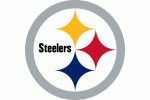This week's NFL TV maps: 506sports
The majority of the country (in terms of map coverage, not necessarily number of households) will see
Miami at New York Jets (CBS, 1 PM)
Minnesota at Atlanta (FOX, 1 PM)
The entire country will see
Thursday:
Philadelphia at Detroit (FOX, 12:30)
Carolina at Dallas (CBS, 4:30)
Chicago at Green Bay (NBC, 8:30)
Sunday:
Pittsburgh at Seattle (CBS, 4:25) *except for the San Francisco market*
New England at Denver (NBC, 8:30)
Monday:
Baltimore at Cleveland (ESPN, 8:30)
Note, all times above are Eastern.
Very quick hitters this week. Home teams in CAPS.
DETROIT (-2.5) over Philadlephia
The Eagles are a mess, and Mark Sanchez is their quarterback.
Carolina (+1) over DALLAS
This line opened at Carolina (-1), which seemed low at the time. I have no idea how we've gotten to a point where Dallas is the favorite.
Chicago (+8.5) over GREEN BAY
In past years I'd pick Green Bay to win big because I was pretty confident Jay Cutler wouldn't get out of this game with less than 2 picks. Cutler's been a different QB this year.
HOUSTON (-3) over New Orleans
Two teams going in opposite directions.
Minnesota (+1) over ATLANTA
The Falcons are imploding, and the Vikings are a good team.
CINCINNATI (-9) over St. Louis
I don't want to overstate the Rams' QB problems, but part of the reason Case Keenum was allowed to continue playing last week is the Rams have no idea what competent quarterbacking looks like.
Tampa Bay (+3) over INDIANAPOLIS
The better team cancels out Bald Mojo.
New York Giants (-2.5) over WASHINGTON
Washington's defense has quietly fallen off a cliff in the last month.
Oakland (-1.5) over TENNESSEE
Honestly? I flipped a coin.
KANSAS CITY (-6) over Buffalo
The Chiefs are coming on strong (4-0 in their last 4 games), and Buffalo set offense back three decades on Monday night.
NEW YORK JETS (-3.5) over Miami
I don't trust the Dolphins more than I don't trust the Jets.
JACKSONVILLE (-4) over San Diego
The Chargers are self combusting amidst their mountain of injuries
Arizona (-10.5) over SAN FRANCISCO
The 49ers can't stop anybody, let alone a top offense.
Pittsburgh (+4) over SEATTLE
I want to be wrong, but I don't see this version of Seattle's defense stopping Ben Roethlisberger. And I don't see this version of the Seahawks offense keeping pace with Roethlisberger.
DENVER (+3) over New England
The Patriots are vulnerable, thanks to their injuries. Denver's defense should feast.
CLEVELAND (-2.5) over Baltimore
The Matt Schaub effect.
2015 Midweek Games: 6-4-1
Last week: 8-5-1 (.607)
Season: 76-78-6 (.494)































